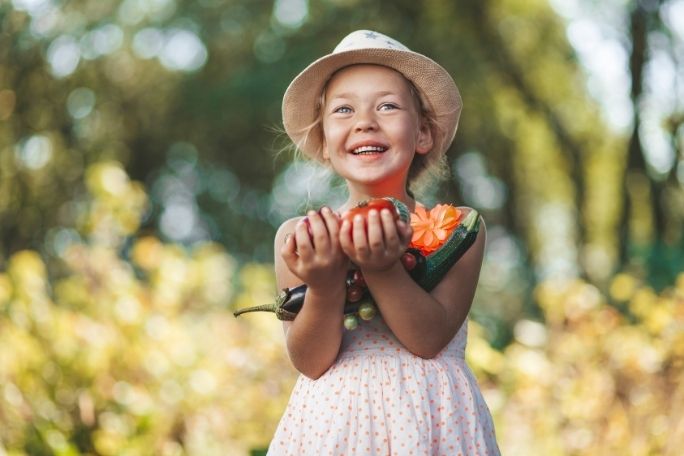Lesson summary
This lesson uses Visible Thinking Routines to make critical and creative thinking clear to students and their teachers – allowing them to identify, evaluate and improve upon their own thinking practices.
Learning intentions:
Students will...
- use the 'Think, Puzzle, Wonder' and 'Compass Points' thinking routines to explore their thinking on a topic
- understand that food can be grown by individuals and communities.
Success criteria:
Students can...
- use thinking routines to understand and develop their thinking on a topic
- identify ways that they can become producers of food.
Lesson guides and printables
Lesson details
Curriculum mapping
Australian curriculum content descriptions:
Year 4 Visual Arts:
- Use materials, techniques and processes to explore visual conventions when making artworks (ACAVAM111)
5 – 6 Visual Arts:
- Develop and apply techniques and processes when making their artworks (ACAVAM115)
Year 4 Design and Technologies:
- Investigate food and fibre production and food technologies used in modern and traditional societies (ACTDEK012)
Year 5 – 6 Design and Technologies:
- Investigate how and why food and fibre are produced in managed environments and prepared to enable people to grow and be healthy (ACTDEK021)
Year 4 HASS:
- Interact with others with respect to share points of view (ACHASSI080)
Year 5 HASS:
- Work in groups to generate responses to issues and challenges (ACHASSI102)
Year 6 HASS:
- Work in groups to generate responses to issues and challenges (ACHASSI130)
Syllabus outcomes: VAS2.2, VAS3.2, ST2-10LW, ST2-11LW, ST3-11LW
General capabilities: Critical and Creative Thinking, Literacy
Cross-curriculum priority: Sustainability
Relevant parts of Year 4-6 achievement standards: Students create designed solutions for each of the prescribed technologies contexts suitable for identified needs or opportunities. They demonstrate different techniques and processes in planning and making artworks.They reflect on their learning to propose action in response to an issue or challenge, and identify the possible effects of their proposed action.
Unit of work: Creative Sustainability – Faber-Castell Sculpture Competition – Early Learning – Year 10
Time required: 60 mins.
Level of teacher scaffolding: Medium – seek relevant materials for art making prior to the lesson and facilitate class discussions.
Resources required
- Student Worksheets – one copy per student
- A3 paper – one sheet per student
- Coloured paper
- Colourful drawing materials such as connector pens, marker pens or pencils
Skills
This lesson is designed to build students’ competencies in the following skills:
- Communication
- Collaboration
- Critical thinking
- Creativity
- Problem solving
- Social skills
Additional info
Faber-Castell has long understood the importance of creativity to all people, especially to young people. It is also continuously searching for environmentally friendly processes and high-quality materials to enhance children’s creative experience throughout every development phase. For more information about Faber-Castell, click here.
Learning@Home resources are designed for parents and teachers to use with children in the home environment. They can be used as stand-alone activities or built into existing curriculum-aligned learning programs. Our Learning@Home series includes two types of resources. The first are fun and challenging real-world activities for all ages, the second are self-directed lessons for upper primary and secondary students. These lessons support independent learning in remote or school settings.


Welcome back!
Don't have an account yet?
Log in with:
By signing up to Cool.org you consent and agree to Cool's privacy policy to
store, manage and process your personal information. To read more, please see
our privacy policy here(Opens in new tab).
Create your free Cool.org account.
Many of our resources are free, with an option to upgrade to Cool+ for premium content.
Already have an account?
Sign up with:
By signing up to Cool.org you consent and agree to Cool's privacy policy to
store, manage and process your personal information. To read more, please see
our privacy policy here(Opens in new tab).